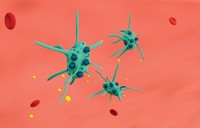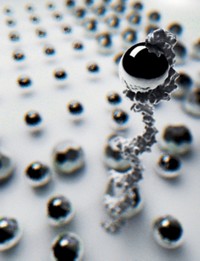Advertisement
Grab your lab coat. Let's get started
Welcome!
Welcome!
Create an account below to get 6 C&EN articles per month, receive newsletters and more - all free.
It seems this is your first time logging in online. Please enter the following information to continue.
As an ACS member you automatically get access to this site. All we need is few more details to create your reading experience.
Not you? Sign in with a different account.
Not you? Sign in with a different account.
ERROR 1
ERROR 1
ERROR 2
ERROR 2
ERROR 2
ERROR 2
ERROR 2
Password and Confirm password must match.
If you have an ACS member number, please enter it here so we can link this account to your membership. (optional)
ERROR 2
ACS values your privacy. By submitting your information, you are gaining access to C&EN and subscribing to our weekly newsletter. We use the information you provide to make your reading experience better, and we will never sell your data to third party members.
Biological Chemistry
Delivery Via DNA Nanobots
Nanomedicine: Spring-loaded structures target cancer cells with deadly cargo
by Bethany Halford
February 20, 2012
| A version of this story appeared in
Volume 90, Issue 8

Just as a postal worker knows to deliver a package to a specified address, a new type of nanoscale robot can deliver therapeutic cargo specifically to cancer cells (Science, DOI: 10.1126/science.1214081). The nanobot, made from DNA, could be used for targeted drug delivery, taking molecules to the surface of specific cells.
A robot is something that senses and reacts to its environment, explains George M. Church, the Harvard Medical School professor who devised the DNA nanobot along with colleagues Shawn M. Douglas and Ido Bachelet. The Harvard team’s robot is a hexagonal barrel that can carry a variety of payloads and is held together by two “locks” made from DNA aptamers, which are short oligonucleotide strands that can bind antigen targets.
When these locks encounter antigens on the surface of certain cells, the antigens bind each DNA aptamer, springing the locks. The robot opens and delivers its cargo. In one example, the researchers loaded the nanobot with antibodies that signal cancer cells in a tissue culture to shut down. Because of their targeting ability, these nanobots are “considerably smarter than your average therapeutic drug,” Church says.
The researchers built the robot using DNA origami, a technique in which short strands of DNA “staple” one long strand into a predetermined shape. It’s been used previously to make novelty structures, such as boxes and smiley faces. The nanobot is one of the first examples of the technique’s use to build a practical device.
“The report convincingly provides a proof of principle that DNA origami has the capacity to create highly intelligent drugs that only become activated when encountering diseased cells,” comments Jørgen Kjems, a DNA origami expert at the University of Aarhus, in Denmark. “This will inevitably lower the toxicity and thereby the side effects of therapeutic drugs carried by the device. The next step will be to harness DNA nanorobots to withstand the harsh environment of living organisms and prove that they can go all the way to create new and more effective nanomedicines for animals and humans.”





Join the conversation
Contact the reporter
Submit a Letter to the Editor for publication
Engage with us on Twitter